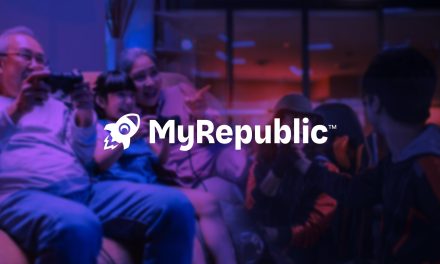Insights on Fixed Cost-per-click (CPC), Niche Targeting and Maximising Reach.
Launching an advertising campaign requires a lot of research and analysis, but it can be one of the most rewarding investments for your business. And while there are plenty of online advertising platforms, 70% of global ad spend is spent on Google and Facebook despite online users spending only 34% of their screen time in these walled gardens, and most of the time they are not actively searching or buying.
While your goal is to maximise traffic, that traffic must be affordable (and authentic!) enough to drive real value for your business. Rather than investing endlessly in an “impulse medium” that sits at the beginning of the consideration process of purchases, digital marketers should be diversifying their ad budgets to truly deliver across the entire purchase roadmap – below the surface level of search.
By finding each customer and plotting their non-linear path to purchase, your pay-per-click (PPC) campaigns should allow you to advertise to them everywhere they go online at any stage to give your business exponential chances to convert.
Get ready for a quick run-down on the following key pillars to help you launch successful search advertising campaigns, allowing your ads to be competitive against your competitors on a keyword-by keyword basis with an average reduction of 62% in cost per acquisition (CPA) at the same budget spent on traditional digital advertising platforms.
#1 – Don’t spend recklessly on expensive keywords on traditional search ad platforms
More competitive industries and those with expensive conversions—automotive, real estate, legal, insurance and financial services, or products like software and industrial equipment—tend to cost more per click for Google Ads. The prices you end up paying for each click can add up fast, especially if you don’t keep a close watch on factors that affect your industry’s CPC.
On traditional ad platforms, broad-stroke keywords such as “legal services” instead of niche keywords like “lawyer for family conflicts” will not only cost you more in your PPC campaigns but make your ads less competitive since every legal service provider will be bidding on these same generic industry keywords.
Alternative platforms can potentially offer a better solution without the hassle of competitive bidding and even potential overspending. Launching keyword-based campaigns outside of the traditional PPC platforms offers you a better opportunity to win the bidding while allowing you to plan your budgets accordingly from the get-go with fixed keyword pricing to ultimately double your results at half the cost compared to conventional market players, even with the same industry-wide keywords.
#2 – Nail your audiences: intent-based targeting tactics
Many businesses want to cut through the noise and target the right customers. With that in mind, learning about intent-based targeting and how it works could help you target customers in new and exciting ways, while eliminating wasteful mass marketing.
Before we dive into the ins and outs of determining the right target market for your business, let’s understand how it’s done. As we’re going into a data privacy-first world, third-party cookies that follow
every step and interactions of Internet users will become a thing of the past. In the post-cookie world, Ultra-specific audiences can be built from an online behavior linked to connected devices, which can help to predict everything from buying behaviours, opinions, and interests – without using any Personal Identifiable Information (PII).
Intent-based targeting combined with a super-targeted campaign allows you to shift from generic demographic targeting such as women aged 18 to 35, to precise higher-intent audiences, like first-time mums, millennial professionals, or first-time homeowners, to help reach the right people at the right time, in the right place, along their path to purchase.
If that sounds a little intense, look at it this way – different customers have different triggers, opinions, and interests and the idea is that intent-based personalized campaigns are going to be more effective in improving your customers’ engagement levels, thus resulting in a better return on your ad investment.
Let’s get down to the how-to nitty-gritty of intent-based targeting:
1. Create your audience persona: Behaviours, demographics, goals, challenges, and actions that show intent.
2. Research competitors and authorities in this niche to analyse followers through their social media and website engagement.
3. Create hyper-personalised content based on the interests of your target audience and the stages of the path to purchase (awareness/ consideration/ conversion) to serve them relevant ads.
4. Create full funnel campaigns to serve relevant ads to prospects in different stages of the sales cycle, allowing our keyword algorithm to identify the most relative intent triggers and accelerate movement toward conversion.
5. Implement an automated and more effective way to identify statistically significant learnings through a combination of keyword assignment algorithm and AI/machine learning.
#3 – Maximise your reach on the open web
When launching an ad campaign, bigger does not necessarily mean better—especially when deciding which publishers will deliver reach most efficiently. While the size of a publisher’s audience is an important factor, publishers need to be able to control their ability to reach a broad enough set of people during the life of the campaign using marketing tactics and frequency capping.
With the expansion of endless devices and ways to watch and consume content, it’s essential that advertisers have the tools to develop campaign management strategies for optimizing their performance within and across campaigns.
Despite having similar parameters and goals, campaigns can perform differently based on the sites they’re served on. The main factor in terms of a campaign’s reach efficiency is these sites’ ability to serve and optimize ads effectively.
It’s time for marketers to wake up to the fact that current search marketing platforms are just a small part of a consumer’s purchase path, particularly for considered purchase industries. Search engine advertising sits only at the beginning of the buyer journey – which makes your online ad a “one search, one chance” model. On the other hand, search advertising on the open web enables you to cover the entire path to purchase of your ideal customers since Internet users spend more than 66% of their screen time on the open web, where they are more receptive to advertising.
It’s all about delivering a larger number of eyeballs online while generating quality traffic and leads to your website.
Finding a true alternative to traditional search advertising
Digital marketers are constantly searching for the Holy Grail of marketing to help them increase the ROI for ad campaigns without overspending. A good advertising tech tool should be able to help you from keyword research and competitive analysis to targeting your ideal customer and launching a campaign. Ideally, it should help you better manage your online advertising budget toward building sustainable advertising campaigns. The right AdTech tool should provide 100% visibility into web analytics to help you optimize your strategies and achieve consistent results for successful campaigns.
You should be able to get the most effective keywords for your advertising campaign with insights on pricing, traffic, and bidding difficulty to drive higher click through and conversion rates. There is much to benefit from more accurate re-targeting with real-time matching at a fixed Cost-Per-Click pricing instead of paying by Cost-Per-Mille (Cost per 1K Impressions) with no click guarantee when using conventional search ad tools.
The best campaigns stand on these three pillars: the right person, the right message, and the right time. Investing in alternative advertising platforms on the open web, beyond the walled gardens of traditional search advertising platforms, will provide your online ad campaigns with a competitive edge to win at the game of keyword search advertising. The bottom line of your success is finding the right platform that will help you convey the right message to the right person across all devices at the right time while safeguarding your ads from PPC fraud.



















